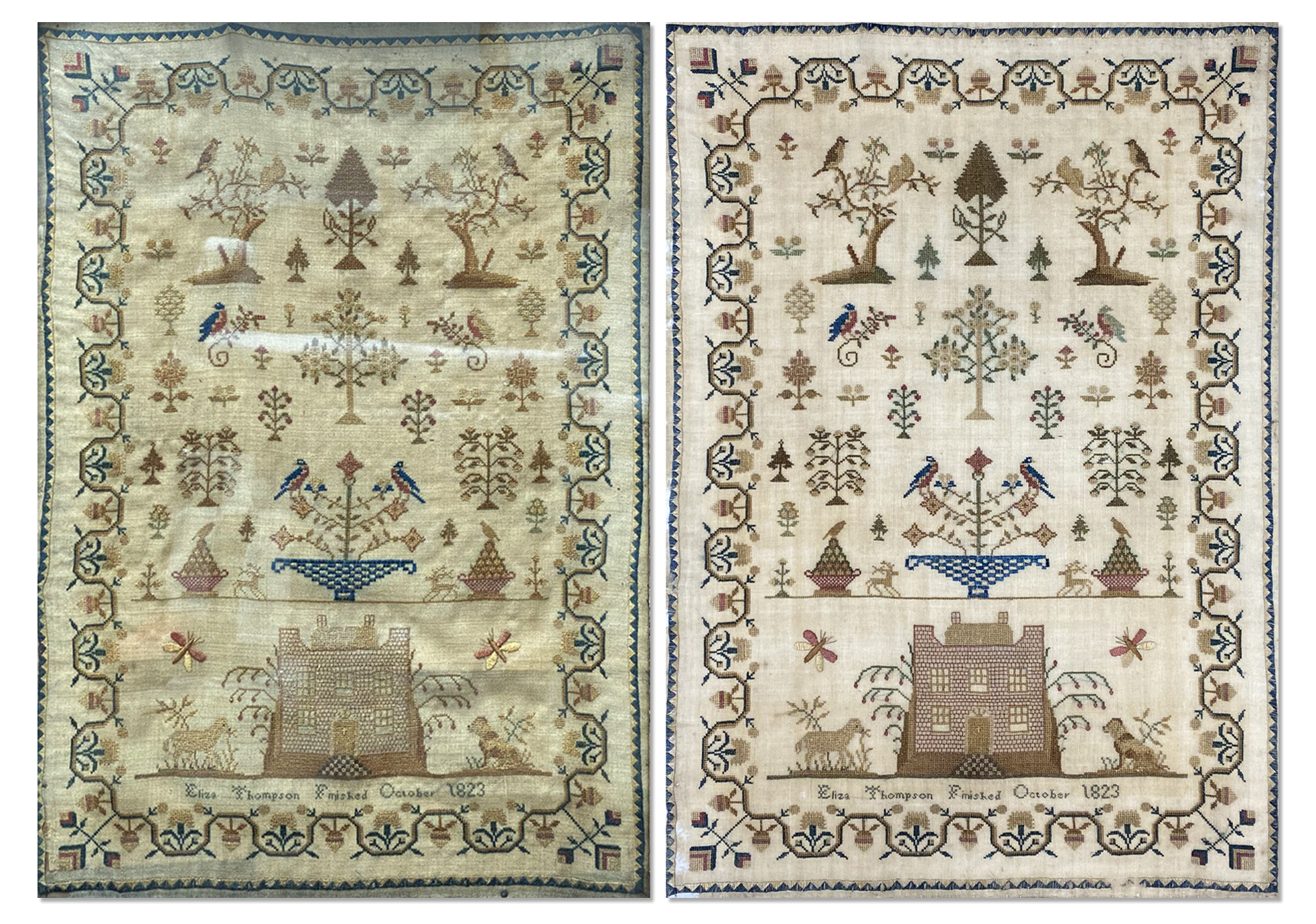Welcome to our latest edition of Conservation Curiosities, where we detail some of the most unique artworks and items to visit our studio. This week we are looking into the history and restoration of samplers, an embroidered craft that is often passed down from generation to generation.
 Above: a selection of antique embroidery samplers
Above: a selection of antique embroidery samplers
As a symbol of accomplishment in needlecraft, samplers were mostly completed by children and young women. Many of the examples we come across today are from the 19th century, though these decorative textiles date back hundreds of years.
 Above: samplers can be important family heirlooms, as seen above in these personalised embroidery pieces of a historic home, family tree and poetry
Above: samplers can be important family heirlooms, as seen above in these personalised embroidery pieces of a historic home, family tree and poetry
What is a sampler?
As the name suggests, a sampler is a sample sheet of embroidery skill. Materials are usually a silk thread on linen, typically completed in cross-stitch.
 Above: a detail from an 18th century sampler
Above: a detail from an 18th century sampler
Samplers may have an array of specially selected designs and patterns, as well as sets of letters and numbers. Many samplers include a name, date and age of their creator. Embroidery with a seemingly random collection of motifs and lettering is known as a spot sampler.
 Above: a selection of samplers that have been signed and dated by the girls who have created them
Above: a selection of samplers that have been signed and dated by the girls who have created them
Spot samplers by children may have patterns and lettering taken out of standardised workbooks as part of their education. Others are industrial in nature, showing the agreed pattern to follow in upholstery studios. Many samplers have religious text and symbols, such as prayers and bible verses.
 Above: a detail from a spot sampler with various flora and fauna designs
Above: a detail from a spot sampler with various flora and fauna designs
Some of the most sought after and admired samplers often have the most creativity, including a self-penned poem or free-hand decoration.
 Above: a selection of samplers with poetry and religious verses, 19th century
Above: a selection of samplers with poetry and religious verses, 19th century
Sampler history
Originally a practical item, samplers were used to ‘collect’ new stitches and patterns. When a needleworker would come across a new design, they would use their sampler in a similar way to an artist using a sketchbook. Over many years, their sampler would collect dozens of new designs and needlework skills.
 Above: a sampler with a collection of different patterns and motifs
Above: a sampler with a collection of different patterns and motifs
Although sample needlework can be found in many cultures (as far back as ancient Egypt) the first European examples are from the renaissance period. 16th century samplers are very rare, very few are still in existence today. The oldest English sampler can be found in the Victoria and Albert Museum – signed and dated Jane Bostocke, 1598.
 Above: a selection of band samplers
Above: a selection of band samplers
Band samplers were popular from the mid 17th century onwards, narrow pieces of fabric were used due to the high cost of textiles. These bands allowed for many stitches to be practised in short lines, becoming a decorative panel by the time they were completed.
 Above: a selection of 18th century samplers
Above: a selection of 18th century samplers
By the mid 18th century, cross-stitch became the dominant form. Samplers from this period are more uniform and square with borders decorating central imagery and text. This approach was due to their increasingly educational use. From the regency period, a sampler would become a key part of a young woman’s education. Embroidery allowed for a creative freedom in what would have otherwise been a restrictive upbringing and adulthood.
 Above: a detail from a late 19th century sampler
Above: a detail from a late 19th century sampler
The ability to create a sampler or a decorative needlework was a sign of status, as only women and girls of wealthy families had the leisure time and education available for this pursuit. In the Victorian era, the industrial revolution created a growing middle class and saw many more children gain access to education. Many 19th century samplers were produced in girls’ schools, often including the name of the establishment in their composition.
 Above: a school sampler from 1835
Above: a school sampler from 1835
Embroidery restoration
Our conservation team has restored many forms of embroidery and needlework, including samplers that have great significance to family history. The most common types of damage we come across are staining, material deterioration, water damage and frame damage.
Above and below are embroidery samplers before and after restoration by our team.
Our conservators can restore these issues with sensitive solutions and methods, ensuring a historically appropriate and safe result. This includes the removal of historic and recent contamination (dust, mould, smoke, soot and nicotine), repair of broken and deteriorating fibres, and stain removal. We can also offer new framing with UV protective glass and a non-acidic mount.
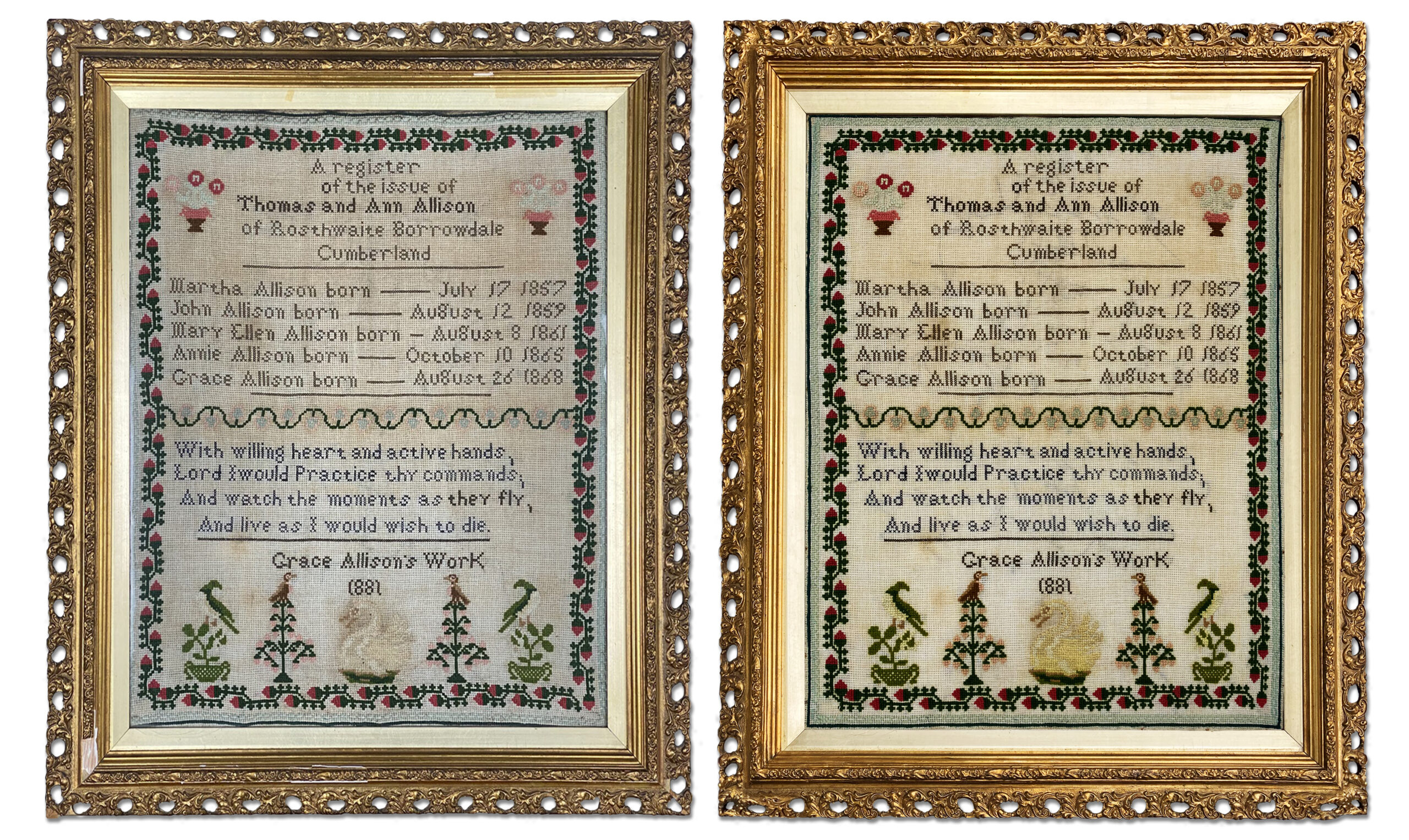
How can we help?
If you have any questions regarding antique samplers, our team is always happy to help. Email us via [email protected] or call 0207 112 7576

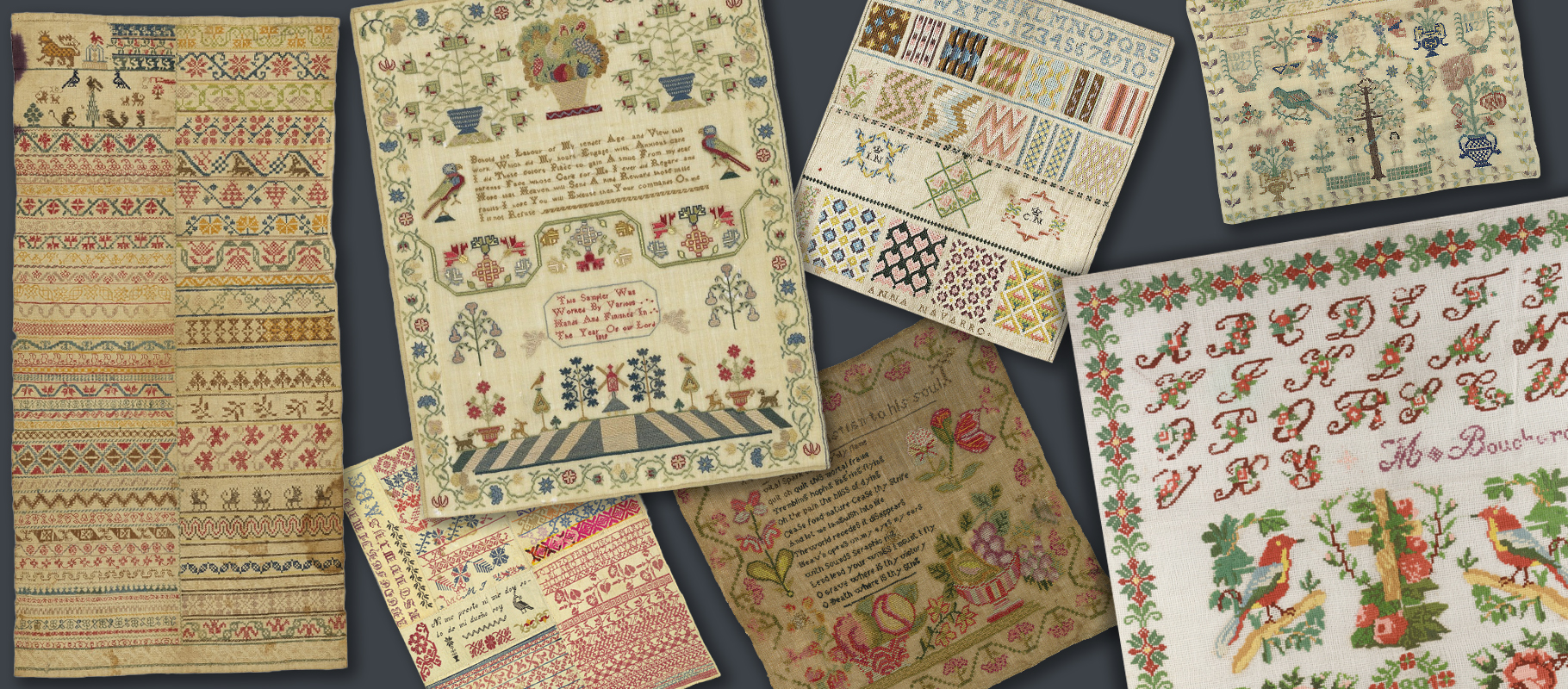 Above: a selection of antique embroidery samplers
Above: a selection of antique embroidery samplers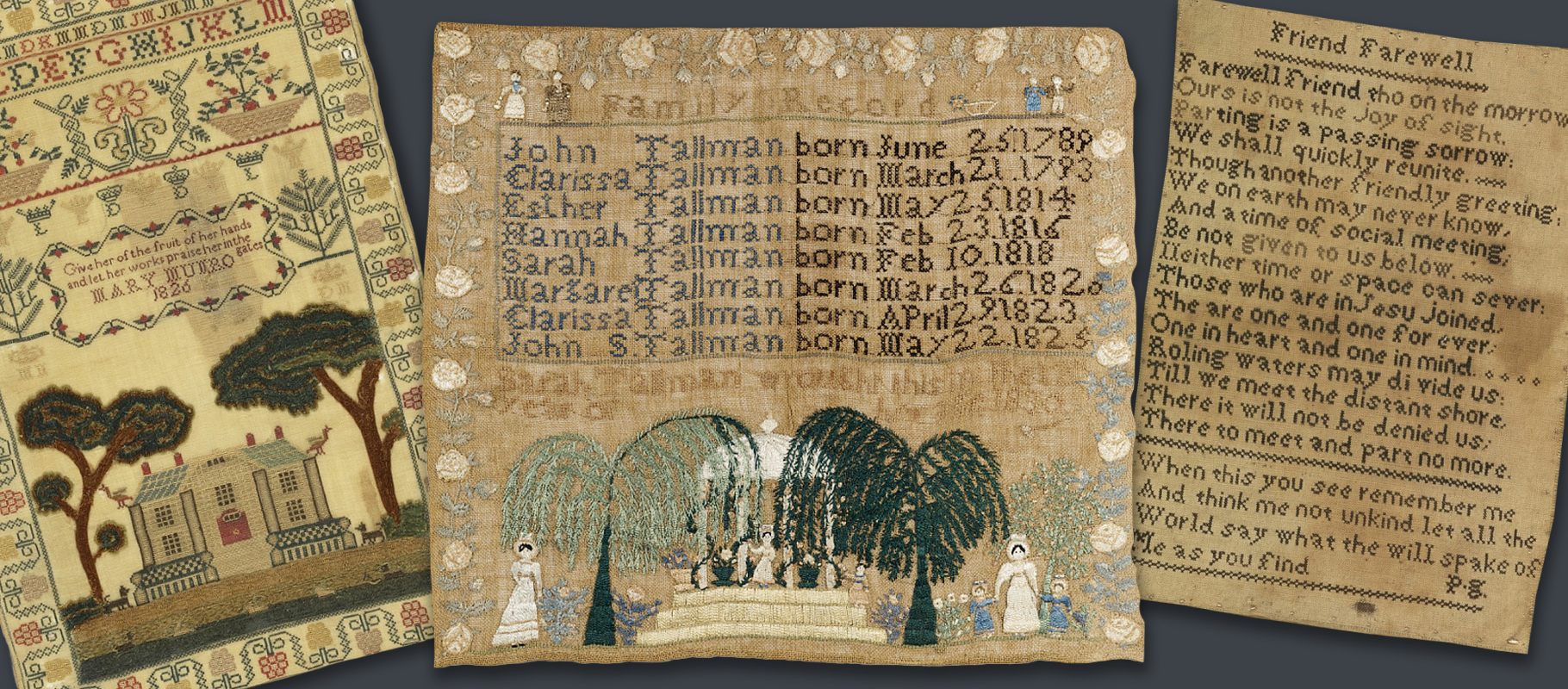 Above: samplers can be important family heirlooms, as seen above in these personalised embroidery pieces of a historic home, family tree and poetry
Above: samplers can be important family heirlooms, as seen above in these personalised embroidery pieces of a historic home, family tree and poetry Above: a detail from an 18th century sampler
Above: a detail from an 18th century sampler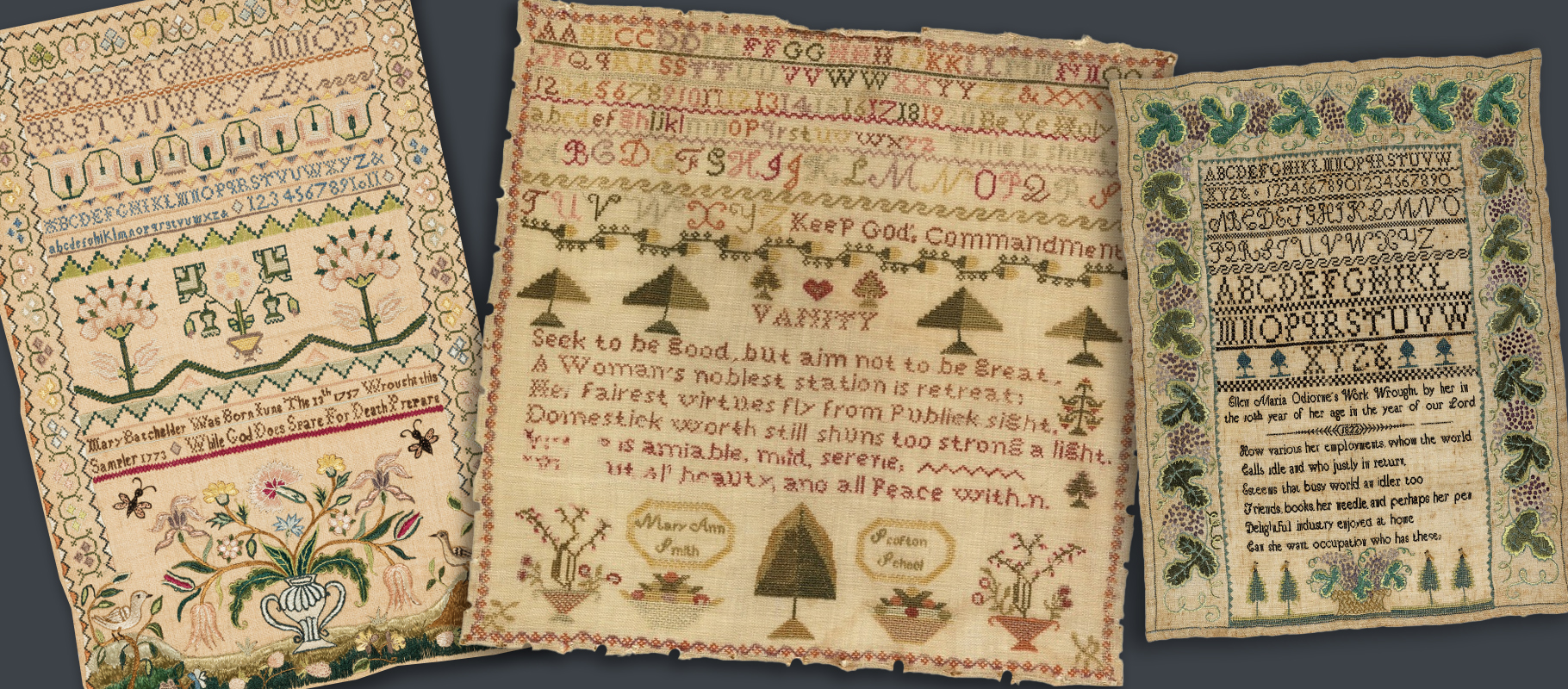 Above: a selection of samplers that have been signed and dated by the girls who have created them
Above: a selection of samplers that have been signed and dated by the girls who have created them Above: a detail from a spot sampler with various flora and fauna designs
Above: a detail from a spot sampler with various flora and fauna designs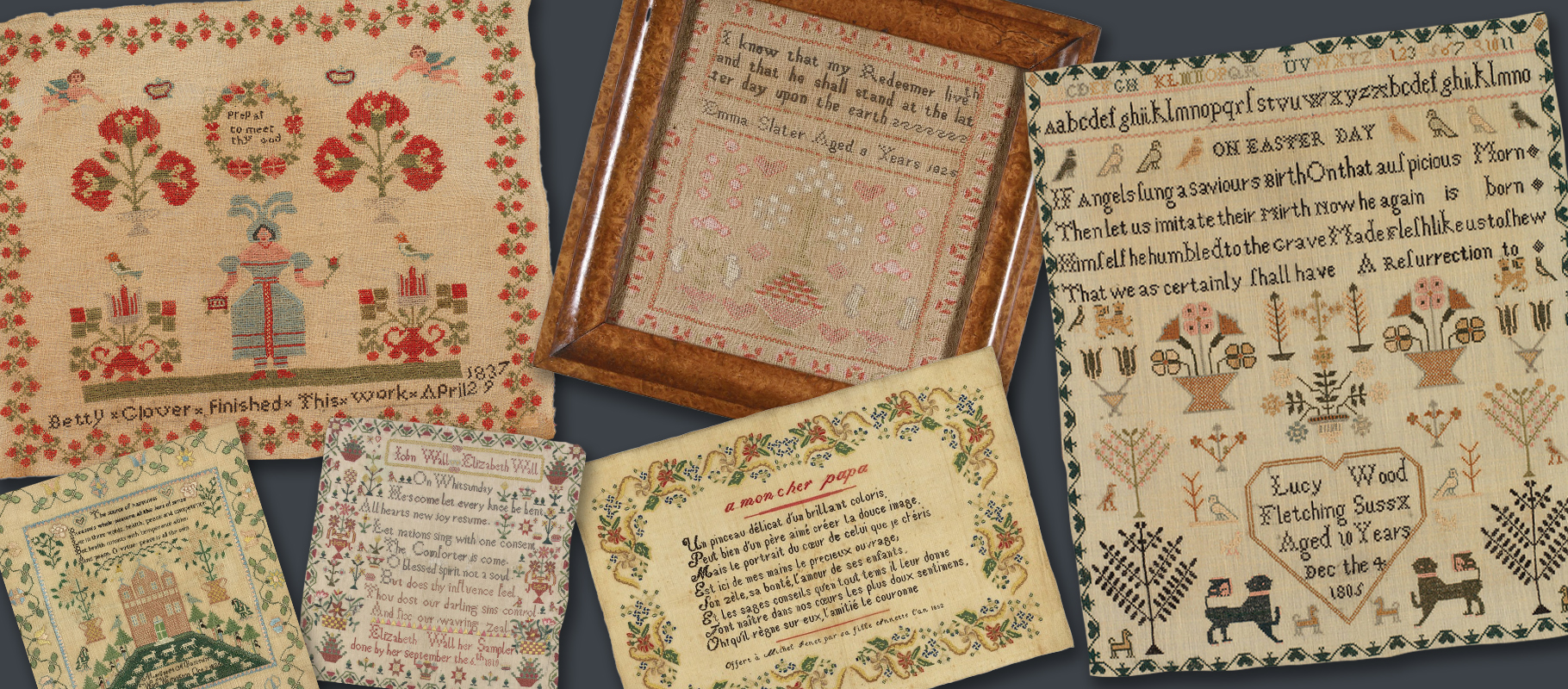 Above: a selection of samplers with poetry and religious verses, 19th century
Above: a selection of samplers with poetry and religious verses, 19th century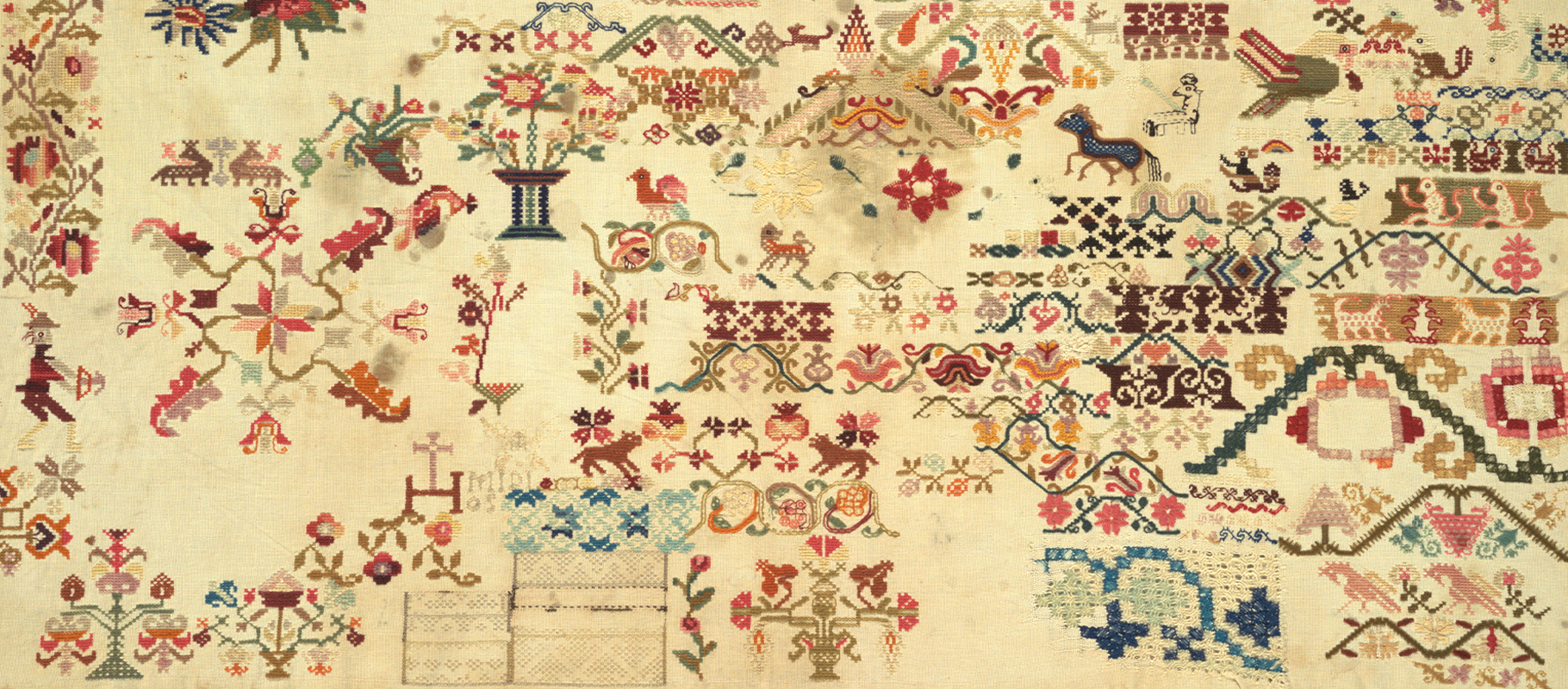 Above: a sampler with a collection of different patterns and motifs
Above: a sampler with a collection of different patterns and motifs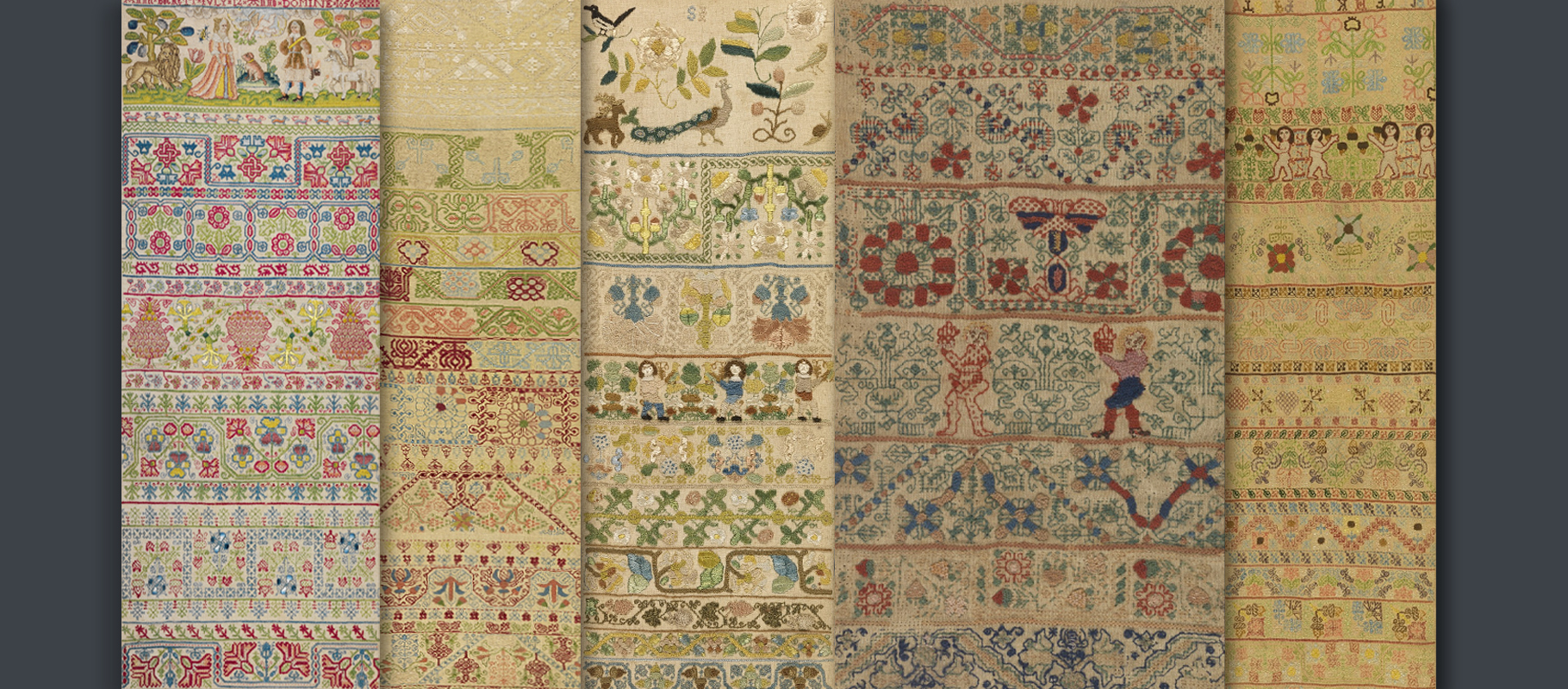 Above: a selection of band samplers
Above: a selection of band samplers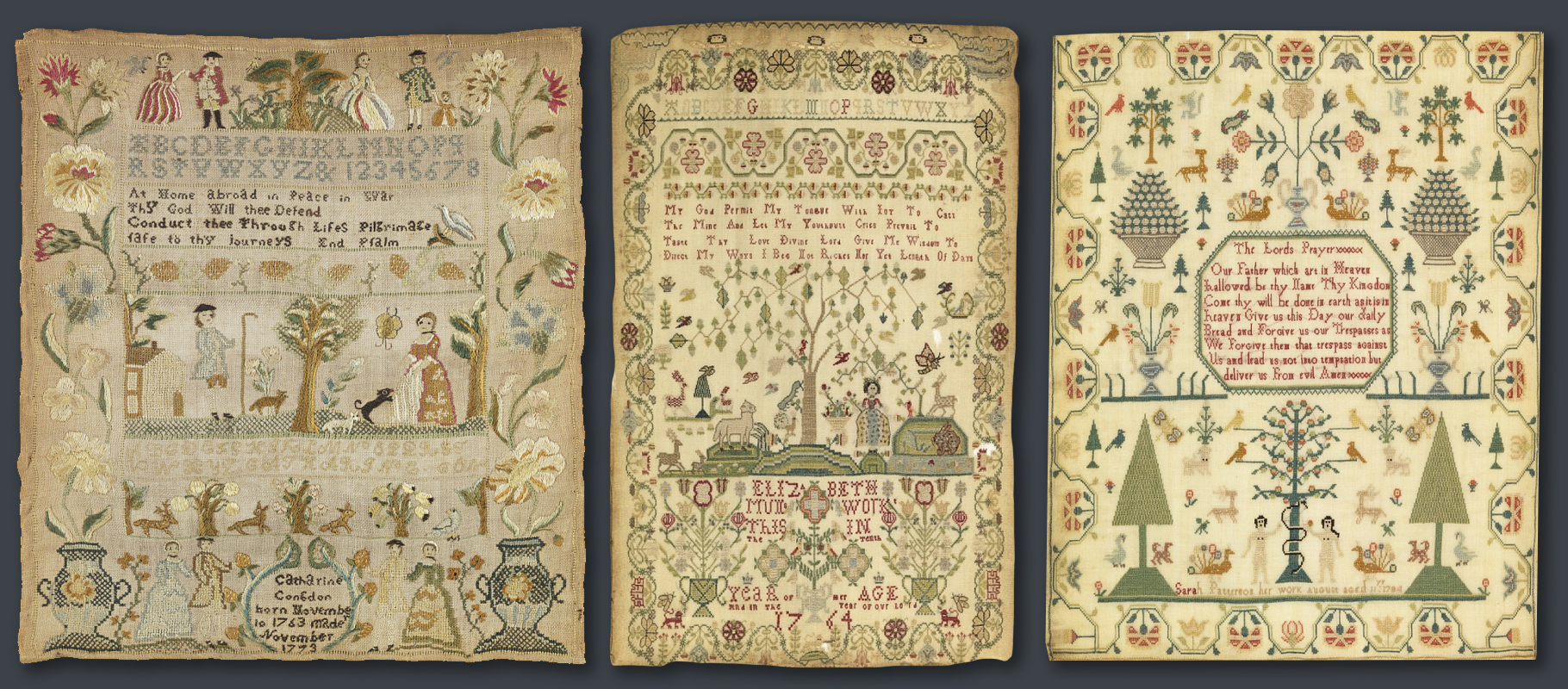 Above: a selection of 18th century samplers
Above: a selection of 18th century samplers Above: a detail from a late 19th century sampler
Above: a detail from a late 19th century sampler Above: a school sampler from 1835
Above: a school sampler from 1835